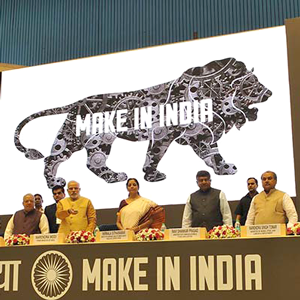 Textile industry, which thrives on both handloom and powerlooms sector, has been riding towards success with each off shoot of its own industry. Whether it is woolen looms, jute or silk, textile industry has home grown experts who have provided the much needed orientation with excellent support system.
Textile industry, which thrives on both handloom and powerlooms sector, has been riding towards success with each off shoot of its own industry. Whether it is woolen looms, jute or silk, textile industry has home grown experts who have provided the much needed orientation with excellent support system.
In the recent times, the availability of raw material at reasonable costs and labour, along with giant strides in technology involving the progress of textile industry, it has turned into a sector that holds lots of promises.
Major textile companies in the recent times, posted a good growth with increase in net profit and a significant drop in net loss, signaling good times ahead for the sector to fulfill the aspiration behind “Make in India” campaign.
What has helped the textile industry, however, is the fact that neighbouring countries like China and Bangladesh which are significant players in the same sector facing structural challenges to the extent that it has affected their export capabilities.
India’s increasing efficiency in the sector along with 100 per cent FDI allowed in the industry, is helping textile firms consolidate their export position. With US economy being slightly on the revival mode and India’s aggressive campaigning with Prime Minister’s “Make in India” tagline, textile sector is out to see much better days ahead than in the recent past.
A free trade agreement with European Union can seriously turn things around for India that is looking at enhancing its textile potential within and outside the country.
India being the third largest exporter is looking at all possible ways of taking over the space left vacant by China. Mega textile shows have been held in new markets such as Japan, Middle East and more are planned to enter spaces in Latin America and Eastern European Countries which are among large economies that can strengthen India’s “Make in India” campaign.
The concept of smart cities that can house multiple expertise, along with organising of skilled and unskilled labour, fair practices and a consolidated legal framework to protect the interest of both workers and employers can surely place textile industry on a growth trajectory than never seen before.














